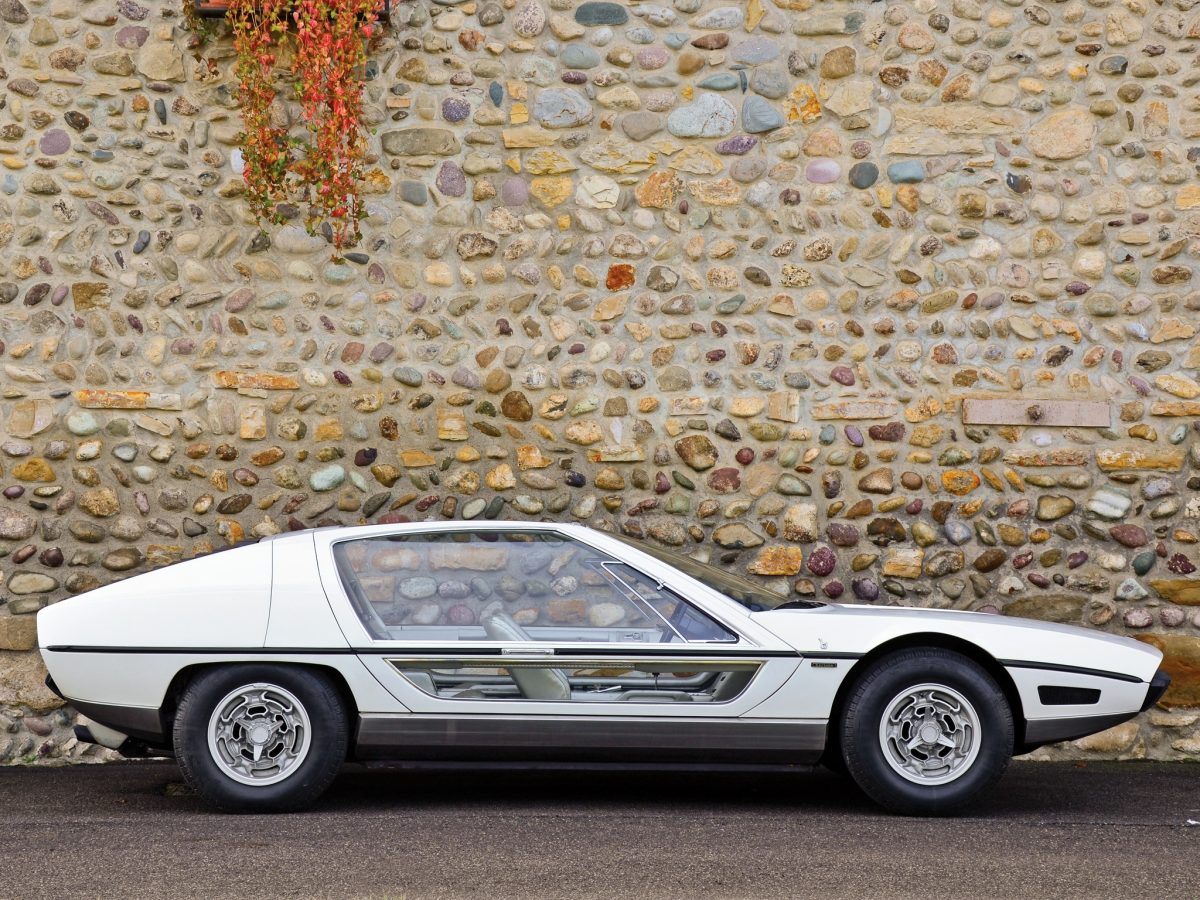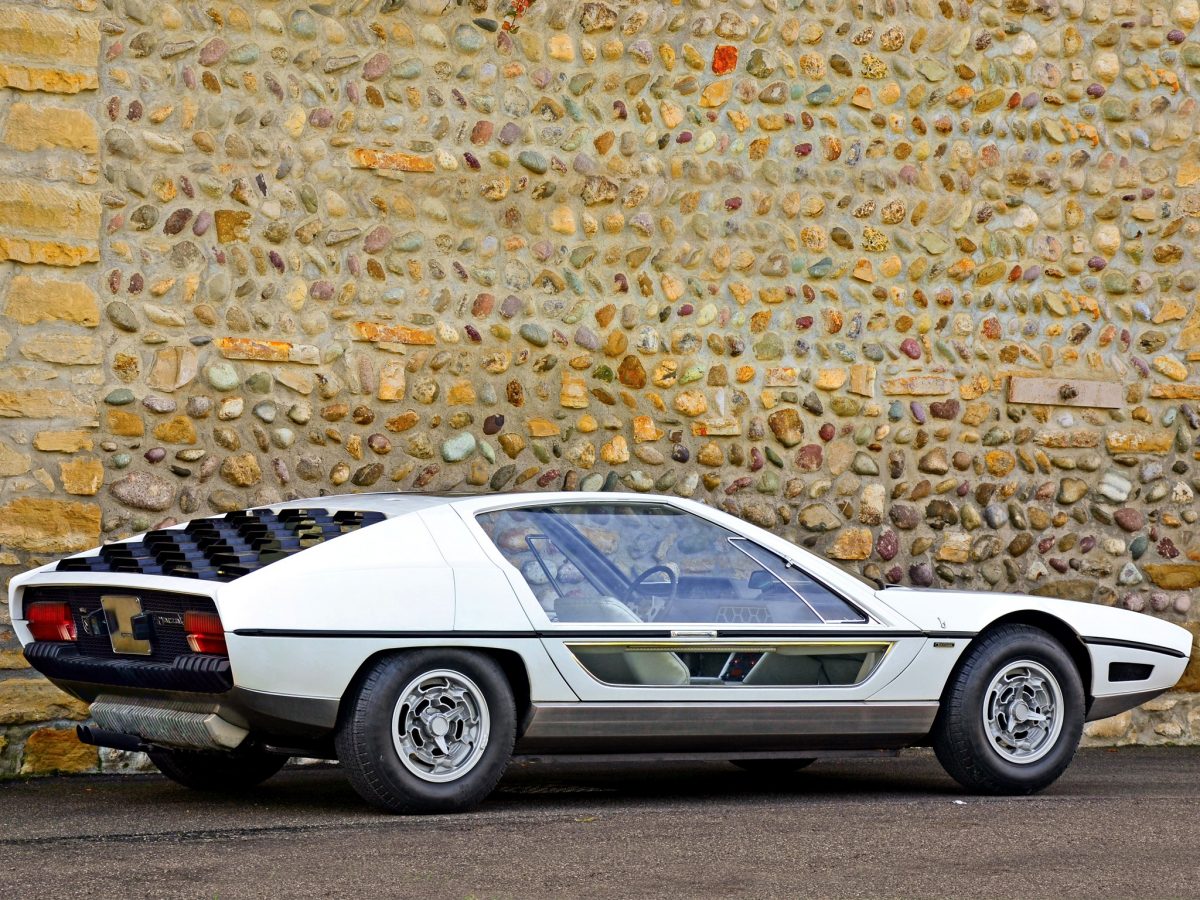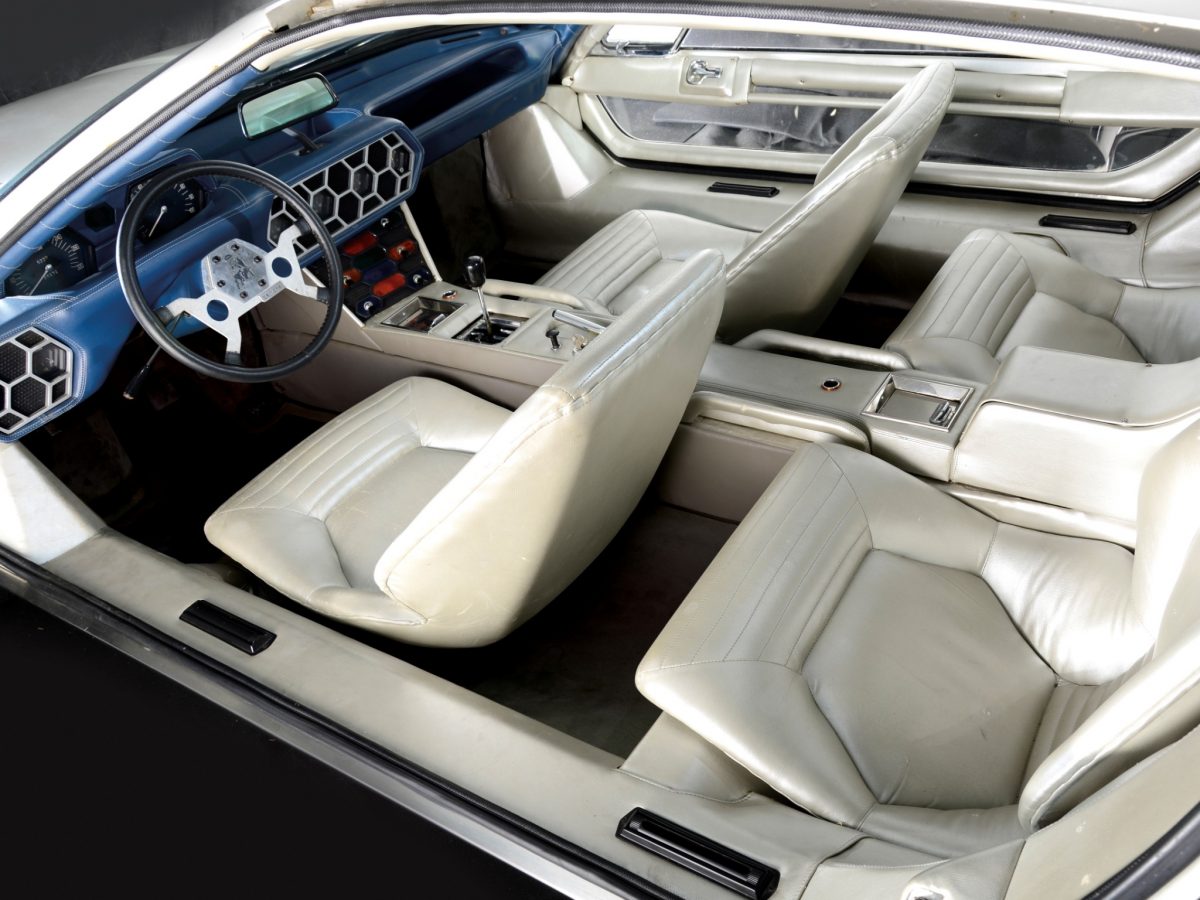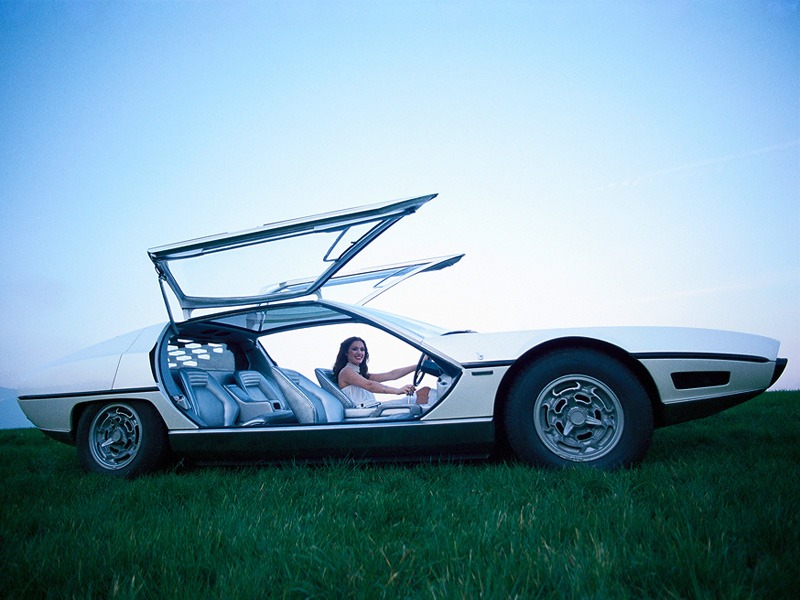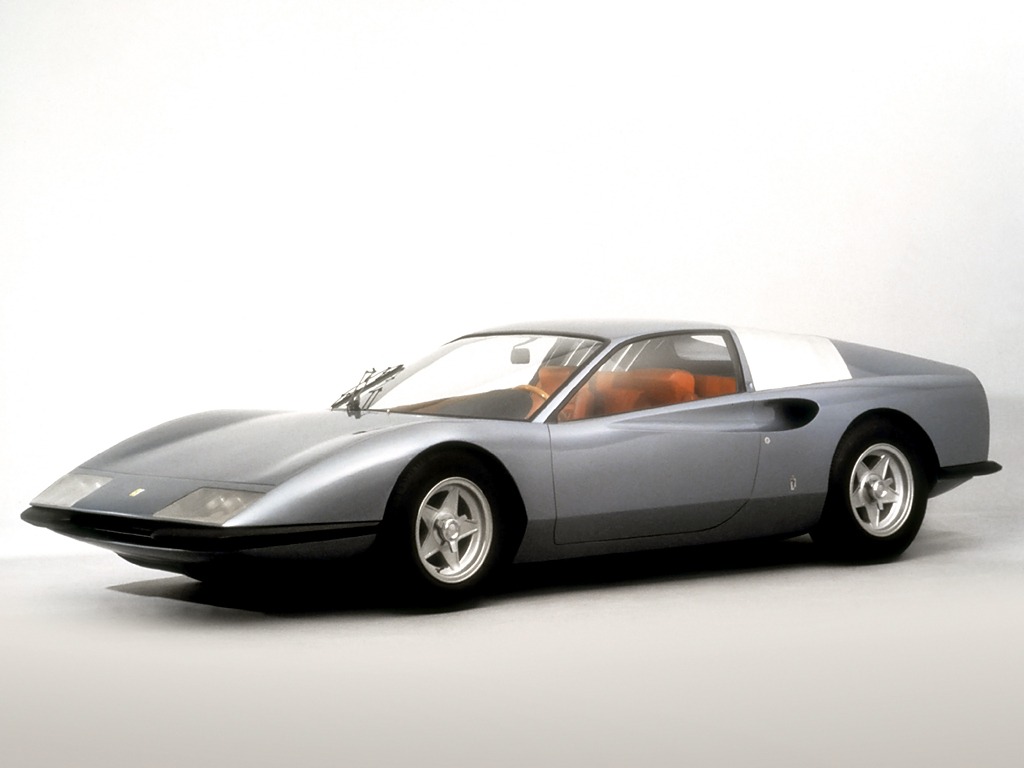
Lamborghini Marzal (Bertone) (1967)
A transparent cabin capsule, lifting wing doors, four seats in the cabin and a honeycomb on the front panel. The creator of the Lamborghini Marzal, Marcello Gandini (in 1967 he headed the Bertone studio) gave rise to an era of provocation.
A prototype of the Marzal sports car was built in 1967. It is based on the units of the small-scale Lamborghini Miura model. Its design, and in particular the body, was developed by Bertone. The machine was not intended for mass production, it was supposed to chart new paths in design. Fully glazed doors opening upwards gave access to both rows of seats at once – such a solution has not yet been encountered in world practice. A transparent roof, metallized coloring of the outer panels (interior trim made of synthetic materials also with a metallized coating) gave the whole structure lightness and airiness. This effect was enhanced by a light glare on the threshold of the body and a contrasting waist line that hid the power beam of the door.
Another innovation was the use of the honeycomb motif in the design. The shape of the rims on the dials of instruments and holes in the disks of cast wheels, the contours of the pillows at the seats, as well as the pattern of cells in the rear panel of the body, are subordinate to it. Functionally, this panel serves as an engine hood, sun blinds, and due to the small thickness of the “honeycomb” jumpers, it does not restrict visibility to the rear.
Specialists from “Bertone” managed to create a swift and unusual composition of a fairly roomy and comfortable body, which served as a role model.
There are several design features of the Lamborghini Marzal that deserve attention. Six very low rectangular halogen headlights are built into the leading edge of the body. A strongly inclined windshield and a power unit are located transversely in front of the rear driving wheels.







